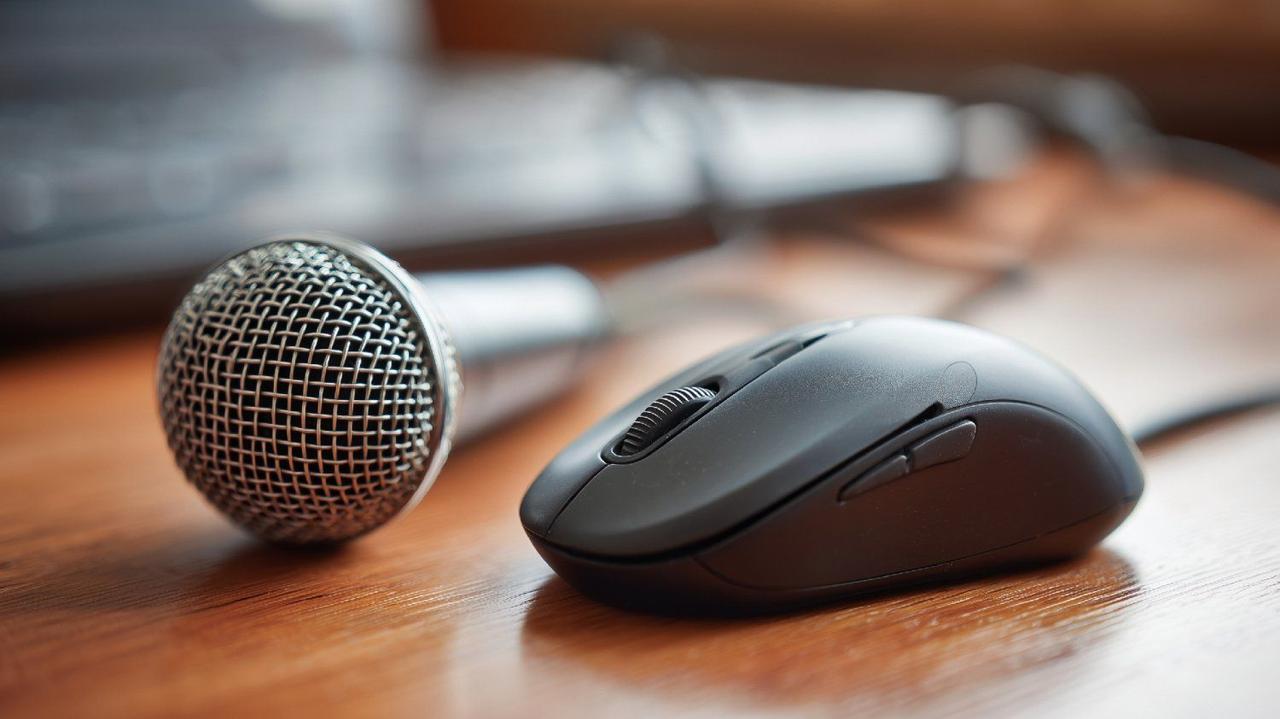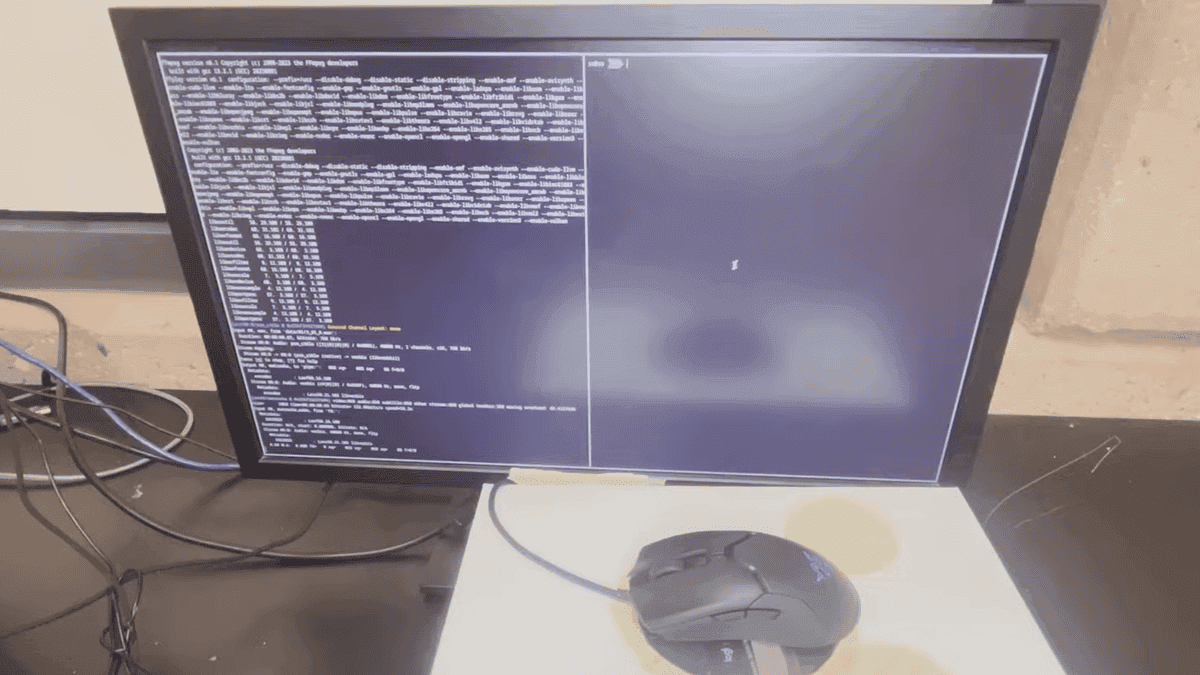AI-Powered Exploit Turns Gaming Mice into Covert Eavesdropping Devices
3 Sources
3 Sources
[1]
Can your mouse spy on you? Research shows a high-sensitivity gaming mouse can pick up your speech with a malicious AI-driven trick
Those vibrations are put through signal processing, and AI is then used to make the results largely audible Is your mouse spying on you? No, it almost certainly isn't, but the peripheral could feasibly be corrupted to perform surveillance duties on an unsuspecting PC gamer based on the findings of a new research paper. TweakTown spotted a paper (authored by researchers from the University of California) which shows how some of the best gaming mice out there can be compromised via malware that uses signal processing and AI called 'Mic-E-Mouse' (because it gives the mouse a pair of big ears, essentially). Why is this about gaming mice? Because these are the types of mice that these days have staggeringly high levels of sensitivity (DPI), and that's what's needed to facilitate the exploit the researchers have found. The compromise is leveraged via the acoustic vibrations in a surface, such as a desk, that the mouse is being used on. When you speak, that creates very slight vibrations in the desk, and believe it or not, a sufficiently sensitive mouse can pick up those vibrations. Mic-E-Mouse records the vibrations, and although the raw noise isn't useful itself, when the audio is run through a signal processing system (Wiener filtering) and then enhanced by AI, the end result is comprehensible. You can check out the results in the YouTube video below, and although the recorded voice sounds heavily digitized, it's audible enough - worryingly so. The researchers claim the system has a "speaker-recognition accuracy of 80%", so while the exploiter may not catch every word, it's likely they'll be able to understand what's being said. What isn't made clear is what effect a mouse mat might have on the surveillance equation here, particularly a thicker pad. So, what would be needed for you to fall victim to a surveillance sting run off your gaming mouse? You'd need to be using a high sensitivity mouse (above 20,000 DPI), but as the researchers point out, those kinds of peripherals can be had cheaply these days - and so are becoming increasingly widespread. Obviously, you would also need to have your PC compromised by malware carrying Mic-E-Mouse, whether the exploit is delivered via an actual piece of software installed on your system, or a web-based attack. Whatever the case, you would have to fall into a trap that'd sneak Mic-E-Mouse onto your PC. Clearly this is a worrying development given the seeming accuracy with which even a relatively cheap gaming mouse can be used to decipher what's being said at a PC via Mic-E-Mouse. As ever, though, if you practice good online safety habits (have a read of this article by a hacker too), and keep yourself armed with a top-notch antivirus, you're unlikely to be hit by a threat like this - and certainly not yet, since it's still early days for this particular exploit. Typically, an attack such as this would be more suited to being aimed at the business world - trying to eavesdrop on corporate secrets and the like - but given that it requires a high sensitivity gaming mouse, this runs against that idea. Naturally, this isn't the first mouse-related exploit we've seen aired, and doubtless it won't be the last.
[2]
Apparently optical gaming mice can spy on what we're saying and video games are an 'ideal target'
Great, now in addition to putting Sellotape over my webcam, tissue paper in my keyholes, and tin foil over my head, I'm going to have to whisper quietly around my gaming mouse. That's because, according to some researchers (via Igor's Lab) our optical gaming mice might be able to spy on what we're saying. And is it a surprise that this fiendish development is aided by AI? Not to me, it's not. Judging from the video demonstration above, the real magic occurs in the last stage of the pipeline, where the neural model cleans up the speech even better than the Wiener filter does (no sniggering, that's a serious scientific term). Apparently this method of snooping can be performed on "consumer-grade mice with high-fidelity sensors", which sounds a lot like "gaming mouse" to me. That does seem to be exactly the case, as in the full paper (pdf warning) we can see the researchers used a Razer Viper at 8 kHz polling to train the models used for this attack. I suppose one of the key requirements is a high polling rate, as a higher polling rate means more data, which means more accurate data clean-up to isolate acoustics, ie, speech: "Attackers can exploit these sensors' ever-increasing polling rate and sensitivity to emulate a makeshift microphone and covertly eavesdrop on unsuspecting users." The researchers also point out that "creative software, video games, and other high performance, low latency software are ideal targets for injecting our exploit." Video games in particular are "ideal targets" because many of them "contain networking code that can be reused by our exploit without raising suspicion. Thus, using a video game as the delivery vehicle of our exploit allows us to meet the performance demands of our collection scheme." However, it looks like the mouse might need to be on a hard, flat surface, and also remain still, for the data to be cleaned well enough to get any speech out of it. So I doubt you'd have to worry while running around in Battlefield 6. Sitting still on bomb site B, defending the entrance to Tunnels on Dust 2, might be another story, though. Perhaps more than anything this is just another reason to keep our polling rates to 2 kHz or lower. All it does is drain your battery anyway, as you won't be able to notice the difference by bumping the polling much higher than this.
[3]
AI helps turn a gaming mouse's high-performance optical sensor into a microphone
TL;DR: Researchers from the University of California developed Mic-E-Mouse, an AI-powered tool that exploits high-DPI optical sensors in gaming mice to eavesdrop on speech by detecting surface vibrations. This critical vulnerability enables up to 80% accurate speech recognition, posing significant privacy risks, especially through video game exploits. Although going for featherweight and ultra-lightweight builds is the latest trend for gaming mice (check out our various mouse reviews here), high-speed optical sensors with impressive sensitivity have been a thing for years. Corsair's SABRE v2 PRO features a 33K or 33,000 DPI optical sensor. The premium Razer DeathAdder V4 Pro Wireless ups the ante to an astounding 45K, while the more affordable PowerColor ALPHYN AM10 Wireless Gaming Mouse still boasts an impressive 26K optical sensor. Thanks to a new AI-powered and fascinating tool called Mic-E-Mouse, any mouse with an optical sensor and at least 20K or 20,000 DPI sensitivity can be used as a makeshift microphone to eavesdrop on people and record their speech, and is described as a "critical vulnerability" by the team of researchers from the University of California that developed Mic-E-Mouse. If you're wondering how a high-performance optical sensor in a mouse can be used to not only detect speech but decipher what's being said with an accuracy of 80%, it sounds like the sort of thing you'd see on TV and roll your eyes thinking, "no way that's possible." As speech creates sound waves with an acoustic vibration, Mic-E-Mouse uses the vibrations on the user's work surface or table that the mouse is sitting on to detect these vibrations. However, as these vibrations are "low-quality and suffer from non-uniform sampling, a non-linear frequency response, and extreme quantization," they're seemingly unusable for speech recognition. However, when paired with signal processing (Wiener filtering) and AI, speech can be recovered. Not only that, but the researchers behind Mic-E-Mouse note that it's surprisingly easy to "collect mouse packet data and extract audio waveforms," and that the ideal "exploit delivery vehicle" for the technology is video games. "Many video games often contain networking code that can be reused by our exploit without raising suspicion," the researchers note. "Thus, using a video game as the delivery vehicle of our exploit allows us to meet the performance demands of our collection scheme." For a detailed breakdown of Mic-E-Mouse, you can find the full research paper here. In the meantime, here's a video of it in action.
Share
Share
Copy Link
Researchers have developed an AI-driven tool called Mic-E-Mouse that can transform high-sensitivity gaming mice into makeshift microphones, potentially enabling covert surveillance through vibration detection.
The Mic-E-Mouse Exploit: Gaming Peripherals as Surveillance Tools
Researchers from the University of California have unveiled a startling discovery that could turn your high-performance gaming mouse into an unexpected eavesdropping device. The team has developed an AI-powered tool called 'Mic-E-Mouse,' which can exploit the high-sensitivity optical sensors in gaming mice to covertly record speech
1
.
Source: TweakTown
How Mic-E-Mouse Works
The exploit leverages the acoustic vibrations created when a person speaks, which cause minute vibrations in surfaces like desks. High-sensitivity gaming mice, typically those with DPI (dots per inch) ratings above 20,000, can detect these subtle vibrations
2
.
Source: PC Gamer
The raw data collected by the mouse is then processed through a series of steps:
- Signal processing using Wiener filtering
- AI-driven enhancement
- Speech recognition
This sophisticated pipeline can achieve a remarkable 80% speaker recognition accuracy, making the recorded speech comprehensible despite its heavily digitized nature
3
.Gaming Industry Implications
The researchers have identified video games as 'ideal targets' for deploying the Mic-E-Mouse exploit. Many games contain networking code that can be repurposed without raising suspicion, allowing the exploit to meet its performance demands while remaining undetected
2
.
Source: TechRadar
Related Stories
Vulnerability and Concerns
This discovery raises significant privacy and security concerns. As high-sensitivity mice become more affordable and widespread, the potential attack surface grows. The exploit could potentially target both individual users and corporate environments, posing a threat to personal privacy and business confidentiality
1
.Mitigation and Protection
While the Mic-E-Mouse exploit is concerning, experts suggest that standard cybersecurity practices can help mitigate the risk:
- Maintaining good online safety habits
- Using reputable antivirus software
- Being cautious about installing unknown software or clicking suspicious links
Additionally, using a mouse pad, especially a thicker one, might interfere with the exploit's ability to detect vibrations accurately
1
.References
Summarized by
Navi
[2]
Related Stories
Microsoft Discovers 'Whisper Leak' Vulnerability Exposing AI Chatbot Conversation Topics
11 Nov 2025•Technology

AI Assistants Inadvertently Sharing Confidential Information in Workplace Settings
03 Oct 2024•Technology

Microsoft's Gaming Copilot Sparks Privacy Concerns Amid Clarifications on Data Usage
23 Oct 2025•Technology

Recent Highlights
1
Google launches Gemini 3 Flash as default AI model, delivering speed with Pro-grade reasoning
Technology

2
OpenAI launches GPT Image 1.5 as AI image generator war with Google intensifies
Technology

3
OpenAI launches ChatGPT app store, opening doors for third-party developers to build AI-powered apps
Technology





